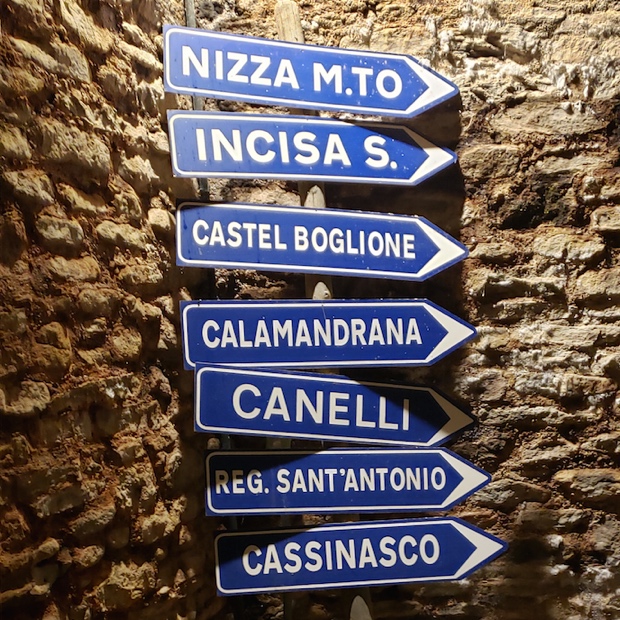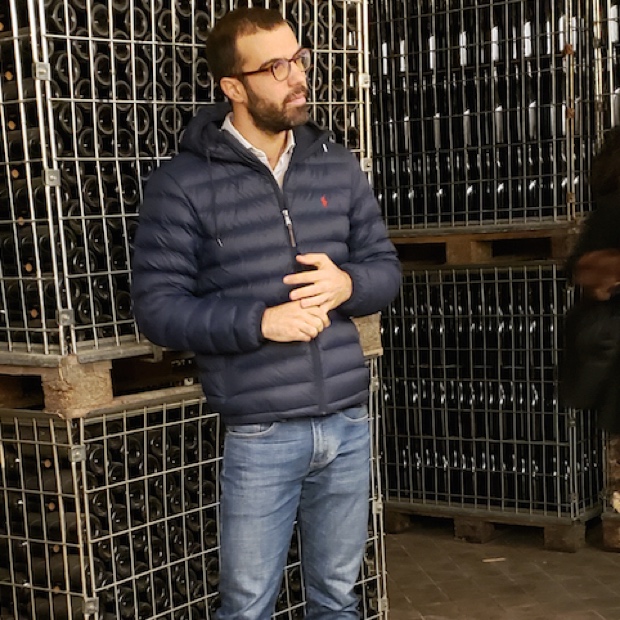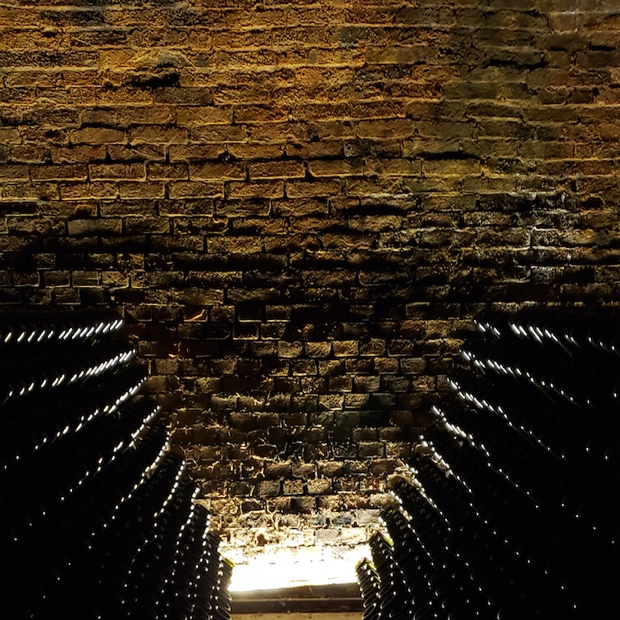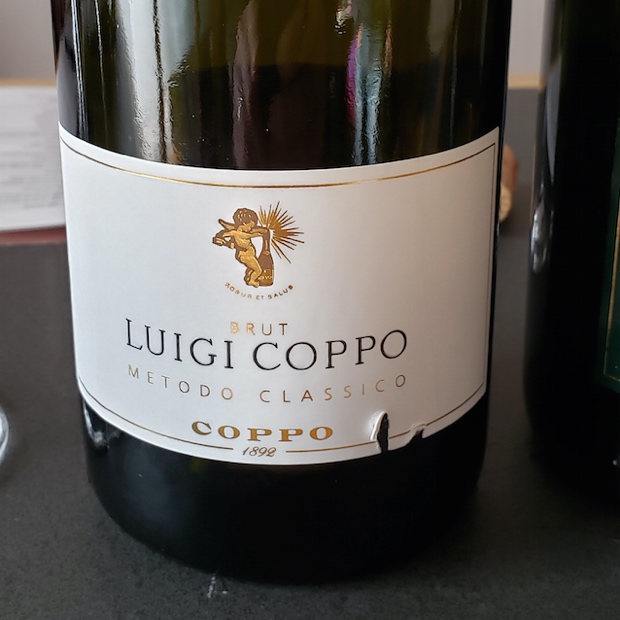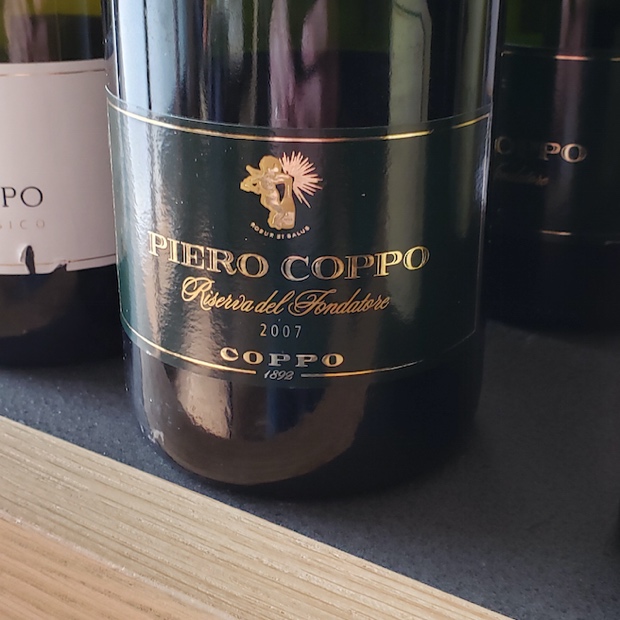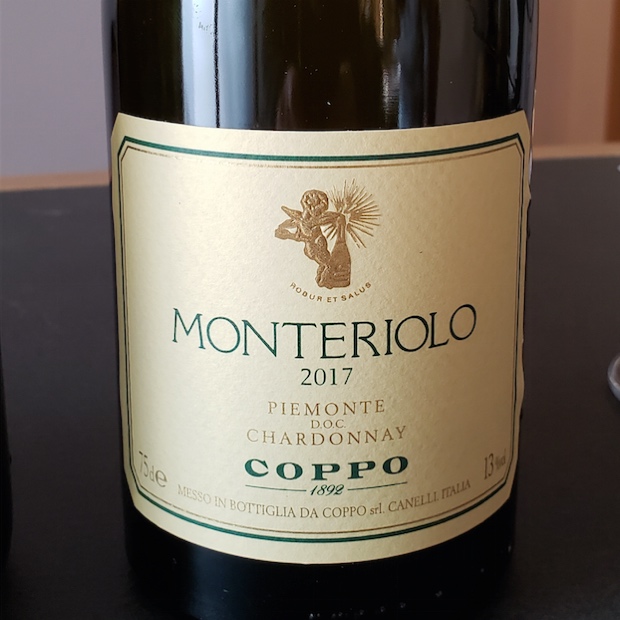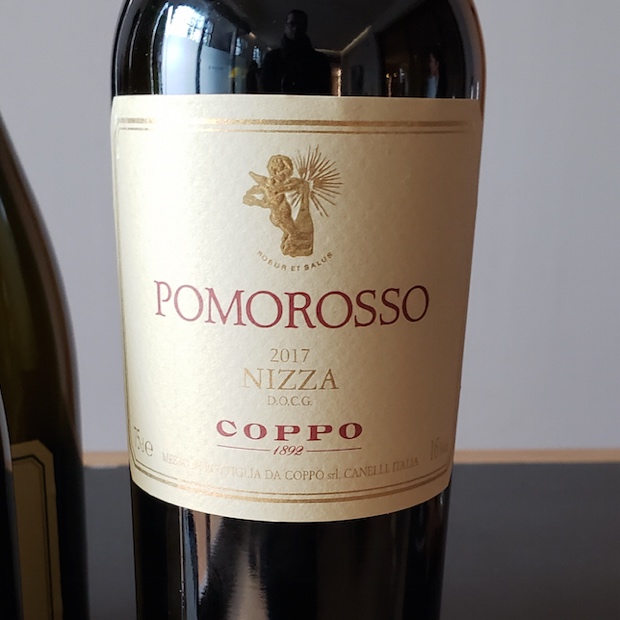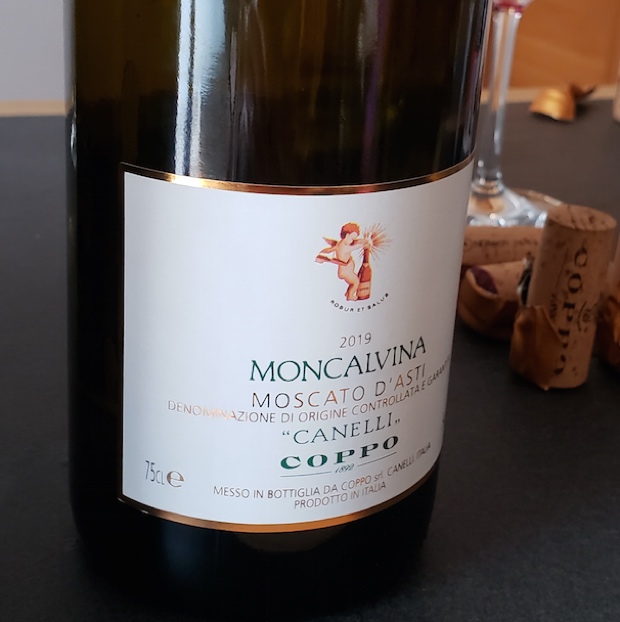Luigi Coppo is grounded in tradition, family, heritage and by a contiguous connection through generational continuance. That much is clear. I’ve met with and tasted Coppo’s wines three times over the last three years; during Barolo’s Collisioni Festival, July 2017, at Relais San Maurizio in Santo Stefano Belbo, December 2018 and most recently at the family’s Canelli estate in December, 2019. Since 1892 Coppo has been nestled in the favourable company of fellow producers Gancia and Bosco, together forming a link between these three most historical wineries in Canelli. Coppo’s Barbera d’Asti and in particular their Pomorosso cru from Nizza Monferrato’s hills are intimately integral charges and while it may have long been established, the advancing Luigi Coppo led Sparkling wine program will push further than merely rivalling the best of Alta Langa. Lookout Franciacorta. Take heed Champagne. And though these estate masterpieces in constant progress will duly impress sommeliers and collectors worldwide, Luigi Coppo still pulls for the workhorses and insists that “Moscato d’Asti is definitely the heritage of our hills.” That amongst their 56 farmed hectares surely counts for something. This is the actuality and presence of Luigi Coppo in Piemonte: Determined, ambitious and yet always cognizant of his roots. All the Coppos in fact; Gianni, Paolo, Luigi, Roberto and Piero. Feet on Canelli ground since 1892.
Related – Three DOCG pillars of Asti: Secco, Dolce, Moscato d’Asti
Much has changed since Luigi’s great-grandfather Piero started the estate in 1892. Today production is 500,000 bottles annually. In another three-pronged producer connection Coppo can make Barolo here in Canelli, along with Scarpa and Bersano. And in 1977 it was Carlo Gancia who as the first in Italy to do so, returned from Champagne to employ moscato in traditional method bubbles. Luigi Coppo is also making use of the Canelli tufo azzuro soils, a mix of blue clay and limestone so ideal for growing grapes to turn them into many variations of sparkling wine. He too embraced the new Alta Langa appellation, beginning in 2010. A specific area was identified, chardonnay and pinot noir were planted and the 30 month lees aging methodology was put into place. Following the dreams of Grandfather Luigi who desired to produce a Bourgogne-style in Piemonte, chardonnay was planted 35 years ago. After nonno passed away in 1994 Luigi’s father Paolo decided to keep the dream alive. Monteriolo sees nine months on lees in barriques; big, buttery, modern and luscious.
Related – Living wine in the moment at Scarpa Winery
The Nizza Classico barbera come from several Monferrato villages while the Pomorosso cru, first made in 1998 sees new French oak for 14-18 months. Moscato d’Asti gets stelvin closures, the wines that age for five to six months are sealed under Diam and real corks for anything longer. The natural barrel cellar was finished in 1970, 42m below ground level. As for the heritage one, says Luigi, “Moscato loves altitude compared to barbera. It’s now time to talk about Moscato d’Asti as a serious wine because it’s very difficult to make. We don’t add sugar or carbonize and it is a vintage wine. These are the three natural and honest things about moscato.”
Related – Rock steady Bersano
What do Coppo’s wines do for us? How are they helpful and perhaps even life-affirming? The truth lies in Luigi Coppo’s humanity and dedication to the things that matter. Something has to save us from ourselves, especially in times such as these, from being inside our heads. Luigi’s wines are the sort to make our wisdom bearable, to rescue us, if nothing else from the ever-bearing fever of begotten biological and ecological destiny. These are the five wines tasted at Coppo.
Coppo 1892 Luigi Coppo Brut Metodo Classico 2016, Vino Spumante Di Qualita DOC, Piedmont, Italy ($40.00 – Estimate)
Traditional method varietal pinot noir in sparkling form, 24 months on its lees and no wood aging. Gainfully fresh and joyous, just a pinch of dosage and regaled, mainly by strawberry but also a sweetly savoury push. Crushable bubbles in the parlance of our times. Drink 2019-2021. Tasted December 2019
Coppo 1892 Piero Coppo Riserva Del Fondatore 2007, Vino Spumante Di Qualita DOC, Piedmont, Italy ($220.00 – Estimate)
A 60-40 split of pinot noir and chardonnay that was at a near to previous time a varietal wine of the first but with 90 months on the lees and more complex notions conceived it was necessary to bring the latter into the mix. This was disgorged in July 2017. The tartufo bianco in this wine is simply uncanny. That and a toasty precision as if by a Japanese chef’s hand, a toasted piece of perfect white bread to the edges in 100 per cent equality by golden caramelization. Sandwich a piece of reverse seared Kobe rib-eye in between two buttered slices with a side of potato chips and creamy cole slaw and Coppo’s your uncle. Mimic with foie gras if you must. Up to you. Drink 2019-2026. Tasted December 2019
Coppo 1892 Monteriolo 2017, DOC Piemonte, Piedmont, Italy ($92.00 – Estimate)
A father and an uncle’s chardonnay dedication to their father with a Bourgignons style and philosophy. This just released ’17 saw nine months on lees in French barriques. Toasty in a “Batard” Italianate way, nearly gingered and a low-yield meets high concentration and alcohol (though maxing out at 13.0 per cent) and purposefully ripe. The hot year took away some control and thus the warm biscuit and accentuating spice notes. A little caramelization and while the joy will be a year or so away it will be a shorter lasting period, albeit a highly anticipated and relishing one. Verdant finish with a scape of citrus zests. Drink 2020-2024. Tasted December 2019
Coppo 1892 Barbera D’asti Nizza DOCG Pomorosso 2017, Piedmont, Italy ($74.95 – Estimate)
A blend of areas, Nizza Monferrato, Castelnuovo Calcea and Agliano Terme, first produced in 1984. “If you want to make Nizza all of your vineyards have to face south,“ explains Luigi Coppo. The exposures gather three levels of sunlight and with 15 days of fully extractive macerated practices the tannins are necessarily pulled to their limit. With varietal acidity set to a natural high there is a three-pronged effect that expresses three separate platitudes and layers for long-term effect. Add the warmth of ’17 and the degree of difficulty and margin for error is very stringent. Castelnuovo Calcea was the last to pick and still only at the end of the first week of September. There’s a phenolic-minor note from the vintage that’s ostensibly unavoidable in a composition like this and yet the richness and structure are non-compromised. Tough to follow the ideal 2016. Drink 2021-2028. Tasted December 2019
Coppo 1892 Moscato d’Asti DOCG Moncalvina “Canelli” 2018, Piedmont, Italy ($23.20 – Estimate)
“Moscato loves altitude as compared to barbera,” tells Luigi Coppo, “and now is the time to think about Moscato d’Asti.” Luigi says it’s a serious wine because it’s difficult to make. No sugars are added or carbonization performed and it’s a vintage wine. These are the three tenets that matter most. From Canelli vineyards between 200-280m and the classicism of construct and effect is pure magic in proper and precise, sleight of hand ability. That’s what it needs to be, no more, no less. Naturally sweet, a pinch of salt and all the orchard fruit; apple, pear, lemon and orange. All together in balance and gift with tannin on a real dry finish. Drink 2019-2023. Tasted December 2019
Good to go!
godello
Twitter: @mgodello
Instagram: mgodello
